
Hillside Convent College, 1915 - 1927
1915: An extract from
The Story of a House - Farnborough Hill by Dorothy A. Mostyn, published in 1980 by Saint Michael's Abbey Press tells the story of how the Hillside Convent College and The Sycamores became
intertwined. The nuns of the Congregation of Christian Education, who were originally based in France, came to Farnborough in 1889 and founded a new English convent in Farnborough called the
Hillside Convent College which was located on Farnborough Road. They opened a day and boarder school in May of that year and due to its success further building was done to increase their
capacity.
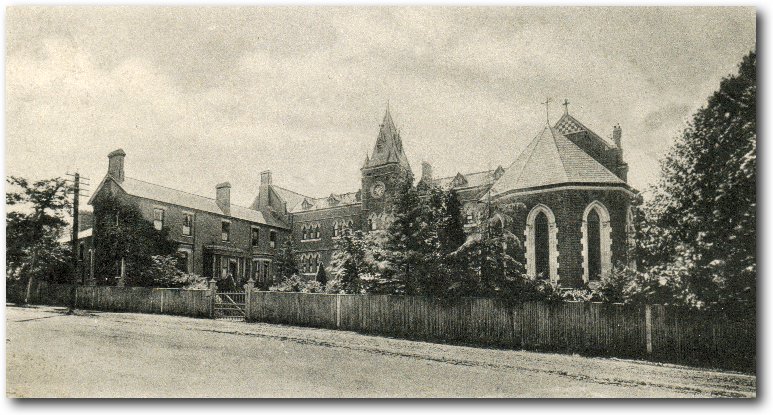
The original Hillside Convent School on Farnborough Road in 1906

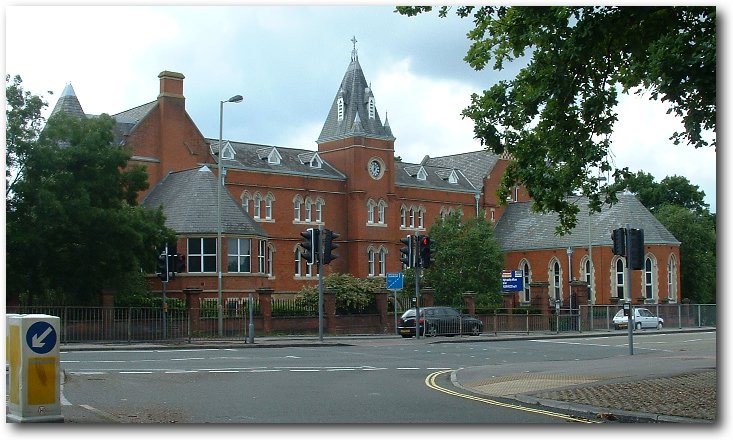
Hillside Convent School on Farnborough Road in 2007

(Credit: Jon Cole)
In 1915, for the duration of the First World War, the buildings were commandeered so the nuns moved to Sycamore House [The Sycamores].
“Mother Roantree was given just so much time as would enable her to find another roof to shelter the Community. This meant a complete upheaval and
the temporary closing of both schools. Mother Ward with her community and school most kindly migrated to ‘Chudleigh’ near at hand, leaving ‘Leehurst’ for the older boarders from Hillside who
went there with Mother Agnes Murray, Mother Tombret, and a few other nuns.
The main body of the Hillside community together with about twenty junior and middle-school boarders removed, in November 1915, to Sycamore House, in Farnborough Park, a pleasant
property which Mother Roantree had providentially been able to acquire. Here the middle and junior boarders, about a dozen of each, were taught by Mothers Rowe and Guerin respectively in two
classrooms.
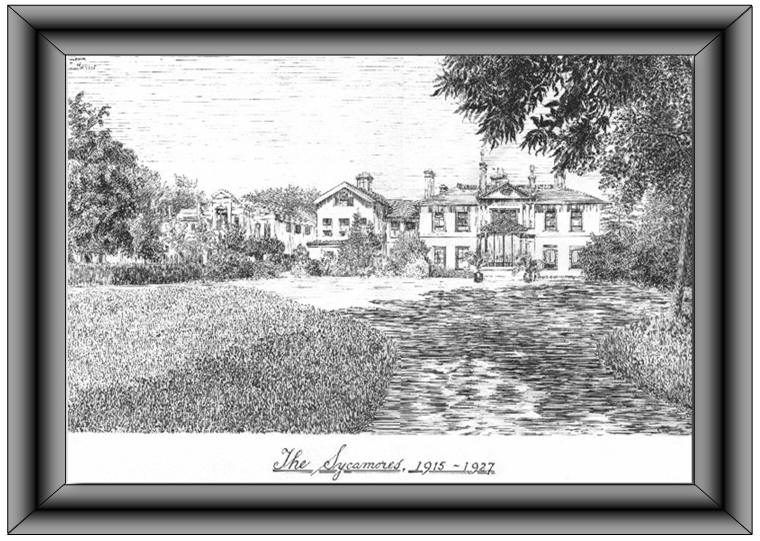
A line drawing of The Sycamores hanging in Farnborough Hill house

The nuns had had life-long experience of teaching groups of several ages together, making their divisions in the one room according to age; for this
system had prevailed in the boarding school up to that time. It was the common practice in all types of schools (witness the two-teacher system from the ages of five to eleven-plus prevailing
until recently in certain village primary schools). In the old Hillside there were five classrooms for two-year classes, taught in divisions through out; in St. Mary’s Day School there were four
such classes. The teaching was thoroughly efficient for the public examinations of the day, Oxford Preliminary, Junior, and Senior were taken with considerable success, e.g. in 1910 a candidate
in the honours list ranked first, fifth and seventeenth in French, German and Latin respectively.
In 1916, at the urgent request of the parents, the day-school was reopened under the headship of Mother Colgan, in a part of Sycamore House, hastily adapted to this purpose. The girls
of that generation will like to recall the shifts the nuns were put to find room for classes, recreations, dancing, gymnastics, and - last but not least - dinner! For a year or more, the
builders were constantly in the house, adding to it, roofing in courtyards and building on waste spaces, and adapting it to its new dignity of a convent school.
A heavy additional burden had been laid on Mother Roantree’s shoulders by the war of 1914; for the German occupation of Tournai cut off the English, French and American houses from the Mother
House which had taken refuge there at the time of the expulsion of the religious orders from France. Correspondence with the Mother General became extremely difficult and precarious for the
local superiors, and it was found necessary to obtain permission from Rome for the establishment of a novitiate outside the Mother House. ‘Hillside’ was chosen as a central position for this
emergency novitiate. Meanwhile fourteen postulants from Germany, Ireland, America, France and England had entered in the course of 1916.
The wonder is how room was found for them all in the cramped quarters at Sycamore House and the Community’s energy and resourcefulness were taxed to the utmost.
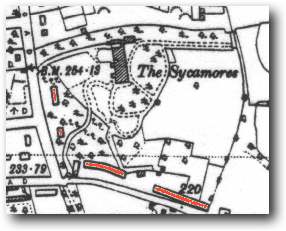 When the Canadian Expeditionary Force, who had been kept in training at Aldershot much against their will, had, by persistent rioting, more
or less forced the hand of the military authorities to draft them to the front, Mother Roantree bought two excellent timber huts which they had left behind. These were put up in the pine-wood
adjacent to Sycamore House and eased the situation considerably. These were the huts which lasted until 1964! [Note: the 1938 map on the left shows, we assume, the
positions of some of these huts] When the Canadian Expeditionary Force, who had been kept in training at Aldershot much against their will, had, by persistent rioting, more
or less forced the hand of the military authorities to draft them to the front, Mother Roantree bought two excellent timber huts which they had left behind. These were put up in the pine-wood
adjacent to Sycamore House and eased the situation considerably. These were the huts which lasted until 1964! [Note: the 1938 map on the left shows, we assume, the
positions of some of these huts]
The postulants were happy to ‘rough it’; and Mother Roantree’s virile courage, joined to Mother Duchemin’s unquenchable and motherly zeal, created an atmosphere of gaiety and fervour that would
have carried these novices through far greater hardships in their training for the religious life.
In the spring of the following year, 1917, the nuns had the happiness of welcoming Mother Duval in the new Hillside for the first time. That was a happy day indeed; for ever since the beginning
of the war, all the members of the congregation had prayed with the pupils of all the houses, and all possible negotiations had been entered into to obtain the Mother General’s release from
Tournai, so that she might be at liberty to visit and communicate with the various Houses. Their prayers had been heard, and it was on 21st November, 1917, the actual centenary day of the
founding of the congregation, that Mother Roantree received the telegram announcing the Mother General’s arrival in France. So when the latter was able to visit Hillside in the following May for
the clothing of the postulants, the community and school celebrated, with small festivities it is true, but with great joy, the double feast of the congregation’s centenary and of her
liberation. On 4th May, 1918 Mother Roantree had the consolation of seeing Mother Duval receive the vows of the first ten nuns of the institute to make their profession in England.
September 1916 had witnessed the return of the senior boarders from Salisbury, and on 18th December the Bishop, who was himself prevented by illness, delegated Abbot Cabrol to bless the new
chapel.
Both boarders and day-pupils continued to increase in numbers; until there was nothing for it but to get a new day-school, and accordingly Wymering
Lodge was purchased, which afforded a little more space. Wymering, however, was soon filled to overflowing with the two-hundred children who came there every day, and the erection of army huts
on the lawn was resorted to as a temporary expedient. Soon after the end of the War, however, the old school buildings were handed back to the Community, though not without traces of their war
work.
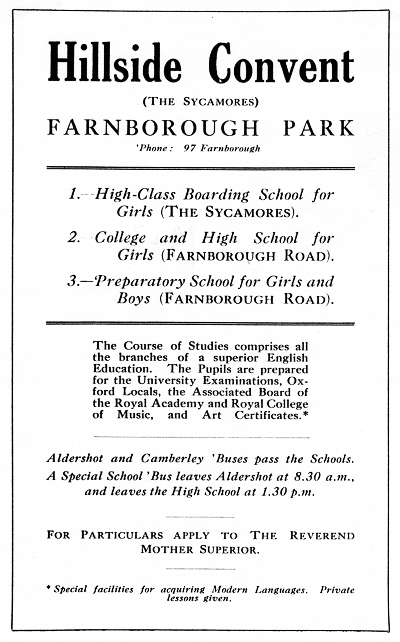
An advert for Hillside Convent College school in the late 20s
After some delay, caused by the formalities attendant on the payment of compensation, it was decided to use the old convent buildings as a school
only, retaining Sycamore House as a residence for the nuns and boarders. The building was renovated and fitted out with all the requirements of an up-to-date school, and on 23rd
September, 1921 it was reopened under the title of Hillside Convent College, and here the boarding and day schools were amalgamated under the headship of Mother Alma Mason. The amalgamation
increased numbers in the age groups, and allowed for reorganisation, dropping the old two-year forms completely. With the raising of qualifications and addition of specialised staff and
modernisation of equipment and teaching methods, no time was now lost in applying for inspection and recognition by the Government. Two visits from His Majesty’s Inspectors, in 1922 and 1923
respectively, resulted in the formal recognition of Hillside Convent College by the Board of Education, in December 1923.
1927: When Prince Victor Napoleon died unexpectedly in 1926, the trustees for the young prince decided that in order to pay the estate duties,
besides those still remaining from the Empress’ death, Farnborough Hill must be sold. This fact was communicated to Mother Roantree who for some time had been seeking a means to extend the
convent boarding-school. The seventy pupils were too many for Sycamore House and its ‘huts’. She and her Community had been praying for guidance on the question whether to build an extension
encroaching on the lovely garden of the Sycamores, or to look for a larger house and estate in the neighbourhood. An unmistakable sign had now been granted them, and negotiations were
started which speedily resulted in the acquisition of Farnborough Hill.
The girls had all been asked to pray for a mysterious intention of Mother Roantree’s - which, they were told, concerned them all. Father George Sexton, S.J., a devoted friend of the school, was
in charge of St. John’s preparatory school for Beaumont. He had stimulated the girls’ fervour by promising them an outing to St. John’s and a delicious tea, when their prayer was answered. On
the last day of May the girls were told what Reverend Mother’s intention had been, and that it had now been granted in a way that exceeded all expectations, so that in the following September
the boarders would reassemble at Farnborough Hill."
A full history of the Hillside Convent College Independent School can
be read on the Rushmoor Borough Council web site as its history is so intertwined with that of The Sycamores.
1918: The photo below shows The Sycamores estate in 1918 although the resolution is not brilliant, most
details can be identified.
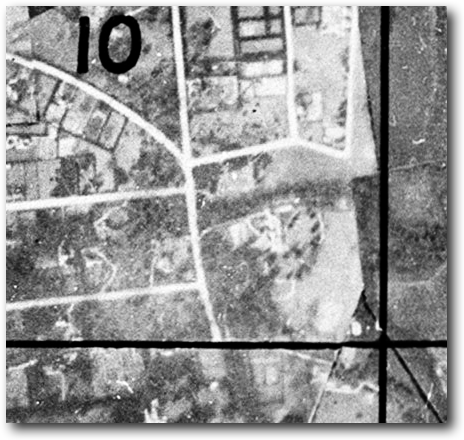
The Sycamores Estate in 1918
(Credit: Farnborough Air Sciences Trust Museum)
All the contents of Farnborough Hill  were
sold by auction as announced in The Times ©,
Tuesday, Jun 14, 1927: were
sold by auction as announced in The Times ©,
Tuesday, Jun 14, 1927:

Today Farnborough Hill
is an independent Roman Catholic day school for girls.


Farnborough Hill in 2007 
1928: In 1928 The Sycamore was sold to Henry Herbert Hilder, a Deepcut based builder.
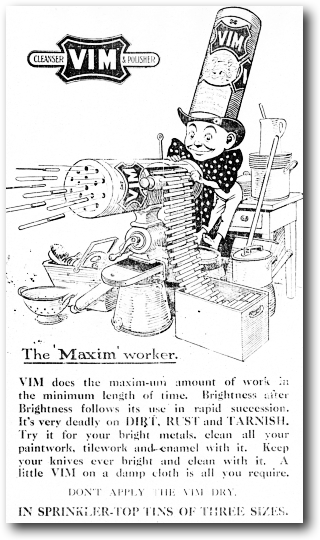
Although this has nothing to do with the subject matter, I could not resist presenting these two adverts found in a 1916 copy of the Farnborough
Chronicle. The first is not particularly in good taste by today's standards. However, "Everything to please the Juveniles" - a maxim gun would probably still go down well!
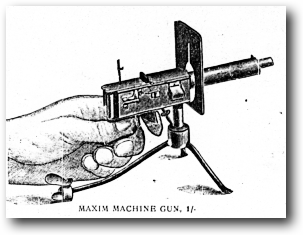
home
|
|




 When the Canadian Expeditionary Force, who had been kept in training at Aldershot much against their will, had, by persistent rioting, more
or less forced the hand of the military authorities to draft them to the front, Mother Roantree bought two excellent timber huts which they had left behind. These were put up in the pine-wood
adjacent to Sycamore House and eased the situation considerably. These were the huts which lasted until 1964! [Note: the 1938 map on the left shows, we assume, the
positions of some of these huts]
When the Canadian Expeditionary Force, who had been kept in training at Aldershot much against their will, had, by persistent rioting, more
or less forced the hand of the military authorities to draft them to the front, Mother Roantree bought two excellent timber huts which they had left behind. These were put up in the pine-wood
adjacent to Sycamore House and eased the situation considerably. These were the huts which lasted until 1964! [Note: the 1938 map on the left shows, we assume, the
positions of some of these huts]





